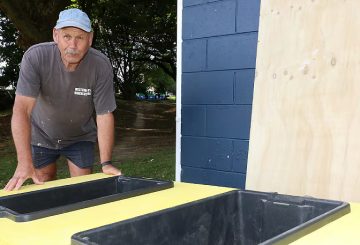今天,青少年将结束第三学期,与去年同期相比,NCEA 的及格分数减少了 93,000 分。
资格审查局向 RNZ 提供的数据显示,今年迄今为止,学校已向该机构报告了 140 万项成绩、优异成绩和卓越成绩,比去年减少 6%,比 2019 年同期减少 20%。
数据显示,今年受封锁影响最大的地区奥克兰,报告的 NCEA 积极成果比去年减少 4%,而包括吉斯伯恩,马尔伯勒和奥塔哥在内的地区则减少了 10-12%。
他们还显示,未取得的成果比去年同期增加了 7%,但比 2019 年少。
中学校长协会主席沃恩·库伊罗表示,学校向资格审查局报告的成绩比去年少,他并不感到惊讶。
“这次封锁与我们去年经历的截然不同的一件事是它临近年底。尽管在我们进入封锁之前,数据可能表明我们在报告的积极结果方面有所领先,但几个月后,情况已经大大放缓,” 他说。
库伊罗说,很可能许多学校已经完成并标记了内部评估,他们在向 NZQA 报告之前需要仔细检查。
他说:“在某些领域或某些评估片段中,这种情况暂停了一些,以至于有一点积压,我怀疑当我们回到第二级并回到面对面时,NZQA 获得的积极报告结果的数量会略有增加,” 他说。
来自 Onehunga 高中的 Josiah Aliimalemanu 告诉 RNZ,封锁使他无法完成一些内部评估。
他说:“本周左右我有很多评估,但是对于音乐表演,你实际上无法在线进行,而体育评估实际上是你无法进行的。”
约西亚说,这意味着当他宁愿准备考试时,他必须在下学期进行评估。
13 年级研究生 Faith Fineanganofo 表示,在家里完成内部评估比在教室里完成内部评估要困难得多,她感到失望的是,她将不得不花一些假期为下学期的内部评估做准备。
学校校长戴德雷·谢伊说,今年封锁的时机比去年的全国封锁和随后的奥克兰封锁更具破坏性。
“就评估而言,我们正在争取到今年年底的时候,这意味着学生在某种意义上比去年处于更加不利的地位,因为在某些情况下,当我们进入封锁状态时,他们已经接近完成一些工作。”
她说,学校会让学生放心,即使他们没有像平时那样完成,他们仍然有时间赶上。
她说:“他们将有机会继续学习和成就,因此,如果他们现在不能完成评估或首先进行评估,就不要过分强调。”
Shea 表示,今年向学生提供的额外学习认可学分应足以填补学生成绩的任何不足。
资格审查局副首席执行官评估安德里亚·格雷表示,报告结果的下降并不奇怪。
她说:“第三学期通常是学校计划进行大量评估的时候,因此考虑到封锁的时机,与去年和 2019 年相比,报告的结果下降并不奇怪。”
她说,今年对 NCEA 和大学入学的更改是为了反映封锁的时间和学生离开教室的时间。
来源:RNZ 新闻





























































